The Biden administration plans to release $38 million in fiscal year 2022 to help fund 40 “shovel-ready” fish passage projects in 23 U.S. states and Puerto Rico, the U.S. Department of Interior announced this month. And, over the next five years, using money from the recently passed infrastructure legislation, Interior will push about $200 million toward fish-passage projects through the National Fish Passage Program.
“Across the country, millions of barriers block fish migration and put communities at higher risk of flooding,” said Interior Secretary Deb Haaland. “[The infrastructure law] provides a once-in-a-generation opportunity to invest in our nation’s rivers, streams and communities and help restore habitat connectivity for aquatic species around the country.”
Indeed, it’s a significant investment in habitat reconnection, but the funding remains modest when compared to the challenges faced by fish populations—anadromous and otherwise—across the country. And, of course, there’s the giant elephant in the room — the salmon- and steelhead-killing dams that stretch across the lower Snake River in Washington state. No federal money is forthcoming to remove what are likely the most egregious dams in the nation, even though dam removal is becoming a top-of-mind issue in the Pacific Northwest, where Republican U.S. Rep. Mike Simpson of Idaho is championing what could become the largest river restoration project in the nation’s history.
Frankly, a large, once-in-a-lifetime infrastructure improvement bill touted simply as the Bipartisan Infrastructure Law by politicians on both sides of the aisle, is incomplete without addressing the Snake River dams. In fact, it may be the official death knell for Snake River salmon and steelhead. After all, how often do once-in-a-lifetime infrastructure bills come around?
According to Russ Thurow, a fisheries research biologist with the U.S. Forest Service, the tens of thousands of salmon and steelhead that used to climb into the Idaho high country to spawn before the dams were built on the lower Snake River are on the brink of extinction.
“It’s hard to say, but now these fish have maybe four generations left before they are gone,” he told The New York Times in 2019. “Maybe 20 years.”
All that said, the smaller-in-scale projects targeted for funding in 2022 will certainly benefit wild and native fish across the country, with projects slated from Alaska to Florida. Interior is even earmarking $1.5 million for a dam-removal and bypass on Puerto Rico’s Rio Culebrinas. The project would allow depleted fish stocks in the river to move freely throughout the system, as well as benefit the increasingly rare West Indies manatee and other larger fauna, like sea turtles while also improving water quality in the river, which flows east to west through numerous communities in the U.S. territory. While the river itself is only about 30 miles long, the restoration projects would open up more than 300 miles of riverine habitat when tributaries and estuaries are factored into the equation.
Elsewhere, $1.15 million in funding will go to the Potomac Headwaters Fish Passage Restoration Program, where it will help with a total of 17 fish-passage barrier removal projects, including full-on dam removals and smaller-scale projects like replacing choked culverts with bridges where roads cross streams. Higher in the system, the removal projects will benefit native brook trout and American eels in Virginia, West Virginia and Maryland. In all, Interior says the Potomac barrier-removal efforts will reconnect about 195 miles in the Potomac’s upper-river drainage.
In Arizona, the NFPP is earmarking $2.3 million to remove six non-functioning culverts and seven barriers, largely on tribal land, that will improve migration and connectivity for native Apache trout. The barriers were first constructed decades ago to prevent non-native trout like rainbow, brown and brook trout from impacting native Apache trout. Since then, efforts to restore Apache trout have moved downstream, and the barriers now prevent the migration of native through several streams on tribal land.
In Florida, the NFPP will spend $600,000 to help remove barriers on three coastal rivers — the Apalachicola River in the state’s panhandle; the Myakka River near Sarasota on the state’s west coast; and the Econlockhatchee River, a tributary to the St. John’s River northeast of Orlando. The projects’ intent is to protect everything from gulf sturgeon to Florida manatees.
In Alaska, the NFPP program is slated to spend $1.6 million to remove an undersized culvert on Tyonek Creek on the Kenai Peninsula. The project is aimed at protecting and enhancing a subsistence fishery for migrating coho salmon. Once complete, the project would give salmon returning to Tyonek Creek access to almost 11 miles of spawning and rearing habitat — a significant improvement, even in Alaska.
The projects aren’t all about prominent game, subsistence and sport-fish restoration efforts. In Utah, in Zion National Park, the NFPP intends to spend $3.5 million to either remove or bypass four dams to restore migration access to flannelmouth suckers, desert suckers, speckled dace and Virgin spinedace, all species of concern in the park. When completed, the project will open up about 20 miles of inhabitable waters in the upper Virgin River.
“In addition to providing benefits for fish and aquatic species, the National Fish Passage Program’s work to restore degraded and fragmented aquatic habitats decreases public safety hazards, improves infrastructure resilience, and creates jobs, stimulating the local economy,” said Martha Williams, director of the U.S. Fish and Wildlife Service.
One item of note: the earmarking of federal funding toward barrier removal and watershed connectivity doesn’t necessarily mean the projects will be completed, or even started, in 2022. Partners in both the public and private sectors will need to come to the table and actually work on the ground to complete these projects. As noted in a press release from Interior, “the National Fish Passage Program has decades of proven experience implementing infrastructure projects with partners to improve the health of the nation’s waterways, reconnect rivers, improve climate resilience and enhance local economies. The program provides financial, engineering and planning assistance to communities, tribes and landowners to help remove barriers and restore rivers for the benefit of fish and people.”
In other words, despite the federal funding aspect, barrier removal and fish habitat enhancement is a team effort that consists of lots of moving parts.
But the money is the first and most important step, even if some of the projects appear small in scale. Remember, as a nation, we’ve had almost 250 years to trash our rivers and streams. Restoring them to functional waterways that benefit fish and people might take just as long.




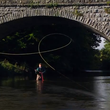


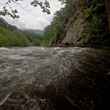



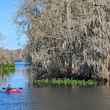
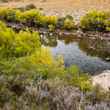



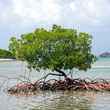





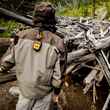




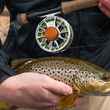




Comments